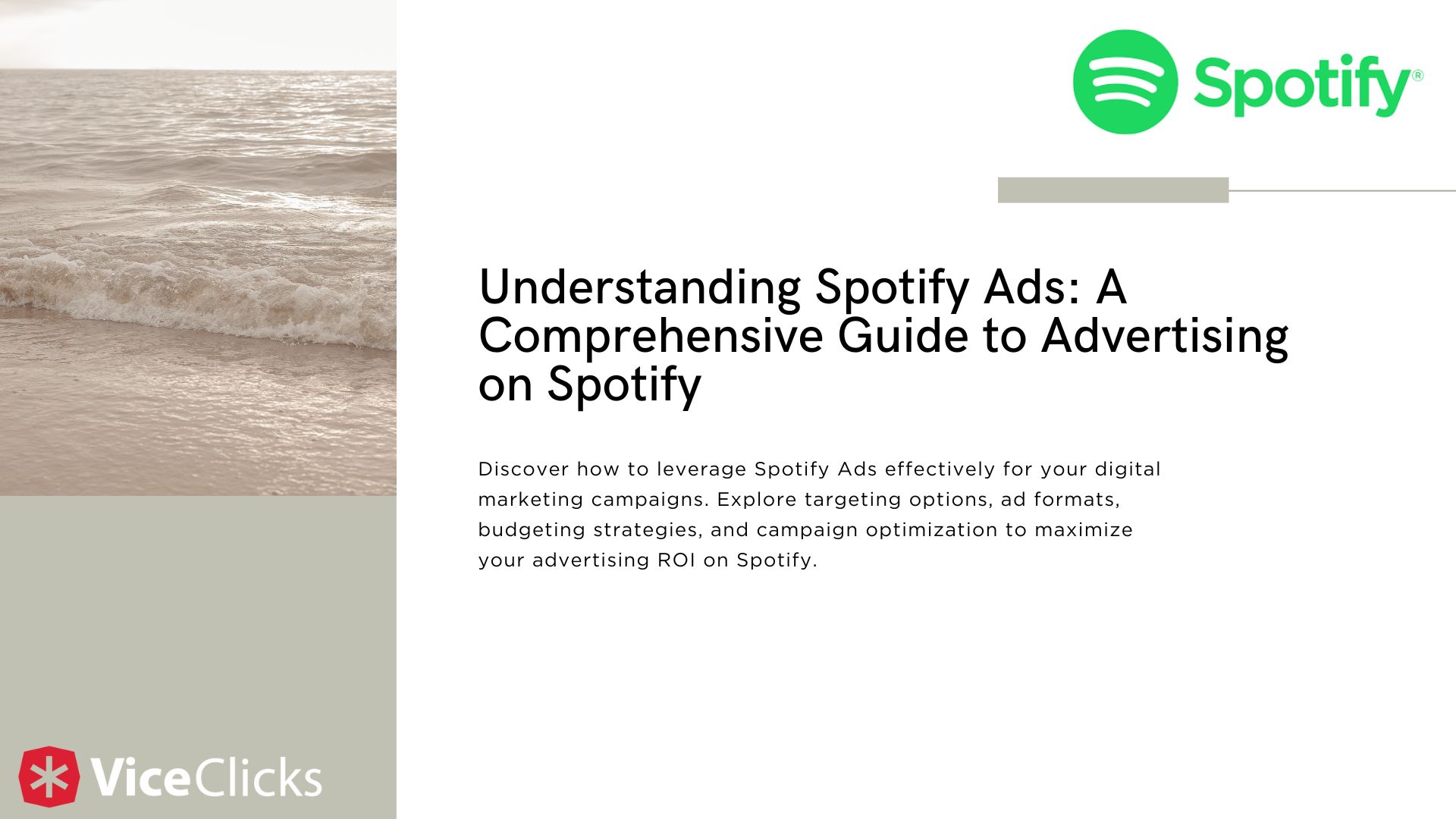Understanding Spotify Ads: A Comprehensive Guide t …

Introduction to Spotify Ads
Spotify Ads offer businesses a powerful platform to engage with millions of listeners through targeted audio and display advertisements on the popular music streaming service. Launched in 2014, Spotify Ads provide advertisers with the ability to reach specific audiences based on demographics, location, interests, and listening behavior, making it an invaluable tool for digital marketing campaigns in the music streaming space.
Types of Spotify Ads
Spotify offers diverse advertising formats to cater to different marketing objectives and budgetary requirements:
1. Audio Ads
Audio Ads are short audio messages that play between songs during users’ music streaming sessions. These ads can effectively convey brand messages, promote products, and enhance brand awareness through voiceovers, music, and sound effects. They are non-skippable and offer a direct way to engage listeners with compelling audio content.
2. Video Takeover Ads
Video Takeover Ads appear prominently within the Spotify app interface for users who are on the free tier of the service. These ads leverage video content to capture attention and deliver impactful brand messaging. They are effective in driving awareness and engagement by combining sight, sound, and motion to create memorable advertising experiences.
3. Display Ads
Display Ads on Spotify appear visually within the app interface and can include images, animations, and interactive elements. These ads are displayed to users while they browse playlists, search for music, or explore the app. Display Ads are versatile and allow for creative flexibility in showcasing products, services, or brand campaigns directly to Spotify’s audience.
Targeting Options
Demographic Targeting
Spotify Ads enable precise targeting based on demographic factors such as age, gender, and location. Advertisers can tailor their campaigns to reach specific segments of the audience most likely to be interested in their products or services.
Interest and Behavior Targeting
Advertisers can target Spotify users based on their interests, music preferences, and listening behavior. This targeting option allows brands to connect with audiences who align with their brand values or who have demonstrated affinity for similar products or services.
Contextual Targeting
Contextual targeting on Spotify involves placing ads in relevant contexts, such as specific genres of music, playlists, or podcast categories. This targeting strategy ensures that ads are displayed to users who are engaging with content that is contextually relevant to the brand’s message or offering.
Campaign Management and Optimization
Setting Campaign Objectives
Before launching a Spotify Ads campaign, advertisers should define clear objectives such as increasing brand awareness, driving website traffic, or promoting specific products. Clear objectives guide campaign strategy and enable measurement of campaign success through key performance indicators (KPIs) such as ad impressions, clicks, and conversions.
Budgeting and Bidding
Spotify Ads operate on a bidding system where advertisers set bids based on their budget and desired ad placement. Advertisers can choose between cost-per-impression (CPM) or cost-per-click (CPC) bidding strategies to optimize campaign performance and achieve maximum return on investment (ROI).
Ad Creative and Messaging
Effective Spotify Ads feature compelling creative elements and messaging that resonate with the target audience. Advertisers should consider the audio and visual components of their ads, ensuring they align with brand identity and communicate a clear call-to-action (CTA) to encourage listener engagement.
Measuring Success
Analytics and Reporting
Spotify provides comprehensive analytics tools that enable advertisers to track and analyze campaign performance in real-time. Metrics such as impressions, reach, frequency, and conversion rates offer valuable insights into ad effectiveness and audience engagement. Advertisers can use these insights to refine targeting, optimize ad creative, and maximize campaign ROI.
Best Practices for Spotify Ads
1. Leverage Personalization: Use Spotify’s targeting capabilities to deliver personalized ads that resonate with specific audience segments based on their preferences and behaviors.
2. Optimize for Mobile: Given Spotify’s predominantly mobile user base, ensure ads are optimized for mobile viewing and interaction to enhance user experience.
3. Test and Iterate: Continuously test different ad formats, creative variations, and targeting strategies to identify what resonates best with your audience and drive optimal results.
Conclusion
Spotify Ads offer advertisers a powerful platform to connect with a highly engaged audience through targeted audio and display advertisements. By leveraging Spotify’s diverse ad formats, precise targeting options, and robust analytics, advertisers can create impactful campaigns that drive brand awareness, engagement, and conversions in the competitive digital landscape.
FAQs
How much does it cost to advertise on Spotify?
Advertising costs on Spotify vary based on factors such as ad format, targeting options, and campaign objectives. Advertisers can set their budgets and bids to align with their specific marketing goals.
Can I target specific music genres with Spotify Ads?
Yes, Spotify offers contextual targeting options that allow advertisers to place ads within specific music genres, playlists, or podcast categories, ensuring relevance to the audience’s interests.
What are the benefits of using Spotify Ads for my business?
Spotify Ads provide businesses with extensive reach, precise targeting capabilities, and measurable campaign performance metrics, enabling effective digital marketing strategies.
How can I get started with Spotify Ads?
Advertisers can create and manage Spotify Ads through the Spotify Ad Studio platform, where they can set up campaigns, select targeting options, and monitor performance metrics in real-time.
Is Spotify Ads suitable for small businesses?
Yes, Spotify Ads offer scalable advertising solutions that cater to businesses of all sizes, allowing small businesses to reach their target audiences effectively and competitively.
